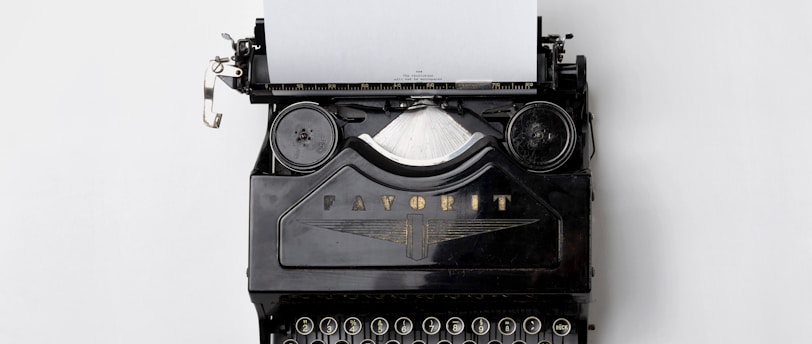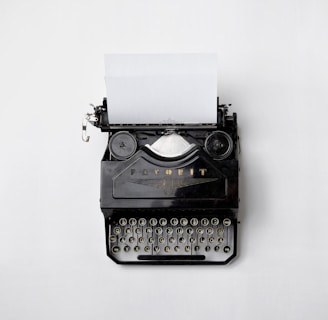10 Effective Strategies for Writing Great Cover Letters for Job Interviews and College Applications
A cover letter serves as a crucial introductory document that accompanies your resume or application materials when seeking employment or admission to an academic program. The primary function of a cover letter is to introduce yourself to potential employers or admission committees while emphasizing your relevant qualifications and experiences that align with the role or program in question.
COVER LETTER
GBF
2/3/20255 min read


Understanding the Purpose of a Cover Letter
A cover letter serves as a crucial introductory document that accompanies your resume or application materials when seeking employment or admission to an academic program. The primary function of a cover letter is to introduce yourself to potential employers or admission committees while emphasizing your relevant qualifications and experiences that align with the role or program in question. Unlike a resume, which primarily lists qualifications and experiences, a cover letter offers a unique opportunity to express your enthusiasm for the position or program and to showcase your personality.
By crafting a well-structured cover letter, you can effectively convey your motivations and passion for the specific role or academic field you are pursuing. This is where you can highlight not only your achievements but also your soft skills and personal attributes that make you a suitable candidate. A well-crafted cover letter allows you to paint a more comprehensive picture of who you are beyond the confines of your resume.
Moreover, it is critical to tailor your cover letter to the specific job or academic program to which you are applying. Customized cover letters demonstrate your genuine interest in the position or program, indicating that you have researched the organization or institution and understand their values and needs. This attention to detail showcases your dedication and commitment, making a stronger case for your candidacy. Tailoring your letter helps you align your qualifications with what the employer or admission committee is seeking, reinforcing your suitability for the role or program.
In essence, understanding the purpose of a cover letter is fundamental for effectively communicating your qualifications and enthusiasm while establishing a connection with potential employers or admissions officers.
Researching Your Target Audience
Thorough research on the company or institution to which you are applying is a critical component of crafting an effective cover letter. Understanding the values, culture, and mission of the organization allows you to tailor your application to reflect a genuine interest and alignment with their goals. To begin, investigate the company's website, paying close attention to the "About Us" section, and delve into their mission statement and core values. This information will provide insight into what the organization prioritizes, helping to inform the tone and content of your letter.
Additionally, leverage resources such as industry publications, news articles, and social media platforms to gain a comprehensive understanding of recent developments, challenges, or achievements associated with the organization. Engaging with these resources will not only enhance your knowledge but will also provide you with the latest context and pertinent keywords that can be incorporated into your cover letter.
Networking is another valuable research method. Connecting with current or former employees through platforms like LinkedIn can lead to invaluable insights into the organizational culture and the specifics of the position or program. This firsthand information can help you articulate how your skills and experiences align with the expectations and ethos of the organization, further proving your enthusiasm for the opportunity.
When integrating this research into your cover letter, be specific about how your values resonate with the organization. For example, if the company emphasizes innovation, highlight examples from your experience that showcase your ability to think creatively. This not only demonstrates your dedication to their values but also illustrates your readiness to contribute positively to the organization’s objectives. Conducting diligent research ultimately serves as a foundation on which to build a compelling narrative in your cover letter, enhancing your chances of making a positive impression on the reader.
Structuring Your Cover Letter Effectively
Structuring your cover letter effectively is crucial for creating a clear, concise, and impactful document. A well-organized cover letter typically follows a three-part format: an introduction, body paragraphs, and a conclusion. Each component serves a distinct purpose and contributes to a cohesive presentation of your qualifications.
The introduction of your cover letter should grab the reader's attention and provide a quick overview of your intent. Begin with a strong opening statement that explains the position you are applying for and how you learned about it. This is also a good moment to convey your enthusiasm for the opportunity. A compelling introduction will not only engage the reader but also set the tone for the rest of the letter.
Following the introduction, the body of your cover letter should consist of one to three paragraphs that detail your relevant experience and accomplishments. Use specific examples to demonstrate your qualifications and how they align with the job or program requirements. This could include highlighting specific projects you've led, skills you've mastered, and any measurable outcomes. Aim to showcase your achievements in a way that resonates with the employer or admissions committee, effectively illustrating why you are an excellent candidate.
The concluding section of your cover letter is an opportunity to reiterate your interest in the position and to encourage further discussion. A persuasive closing statement should express your eagerness for an interview and thank the reader for considering your application. Additionally, make sure to indicate your willingness to provide further information or clarify any points if necessary.
Proper formatting and appropriate length also play significant roles in the effectiveness of your cover letter. Aim for a length of about three to four paragraphs while keeping the overall document to one page. Use clear headings and a professional font to enhance readability. A well-structured cover letter not only conveys information but also reflects your attention to detail and professionalism.
Polishing and Personalizing Your Letter
When it comes to crafting an impactful cover letter, polishing and personalization are crucial components that can significantly enhance its effectiveness. After you have drafted your cover letter, the first step is to thoroughly proofread it for grammar and spelling errors. These mistakes can detract from the professionalism of your letter and potentially undermine your application. Utilize tools like grammar checkers, but also take the time to read through your letter multiple times. This will help you catch any errors that may have been missed by automated programs.
In addition to grammar and spelling, make sure your letter flows well and communicates your thoughts clearly. Consider whether your sentences are too long or complex. Clear and concise writing not only reflects well on you as a candidate but also makes it easier for the reader to grasp your qualifications and intentions.
Infusing your unique personality into your cover letter is equally important. This is your chance to stand out from other applicants by showcasing your individual strengths and experiences. Use anecdotes or specific examples that illustrate your skills or passion related to the position or program. This authenticity can help create a connection with the reader, making it more likely that they will remember you.
Finally, seeking feedback from others can provide valuable insights that improve your final draft. Share your cover letter with mentors, friends, or family, and be open to their suggestions. Adjustments made based on constructive criticism can sharpen your message and enhance the overall quality of your letter. Remember, your goal is to create a cover letter that not only maintains a professional tone but also represents your genuine self.
